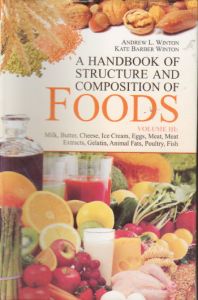
Contents: Vol. III: Milk Butter Cheese, Ice cream eggs, Meat, Meat Extracts, Gelatin, Animal Fats, Poultry, Fish: 1. Milk and milk productions. 2. Eggs. 3. Animal products. Index.
The mission of the work is to exploit the interrelation of structure or optical science to composition or chemical science. The scientific subject matter is treated under three main heads, (1) macroscopic structure, with the due regards to morphology, (2) microscopic structure, which is equivalent in most cases to histology or morphology of the tissues, and (3) chemical composition of the natural product and when practicable of its parts separated mechanically whether in the laboratory or in the factory. The classification is first by economic groups, second by parts: fruits, seeds, leaves etc., third by families, forth by genera and fifth by species. Each natural product heads a chapter. After brief statement of origin habitat, botanical relationship, and uses.
The early studies of nutrition led to the framing of a system of analysis in six groups, the results of which have accumulated through several generations. Somewhat later, stimulated by the passage of laws to suppress fraud, more detailed analyses of genuine products were carried out the results of which serve as a guide in interpreting analyses of suspected articles. Investigation carried out at official and private laboratories in endeavors to widen variety, better quality, increase yield, reduce cost, and prevent waste involved numerous analyses often including determinations of lesser known constituents.
Supplementing these accumulated data in the applied field are the discoveries of new constituents and of new facts, with regard to constituents previously known to exist made by a small but devoted group of workers not seeking immediate application but imbued with the idea the fundamental knowledge is an economic asset.
